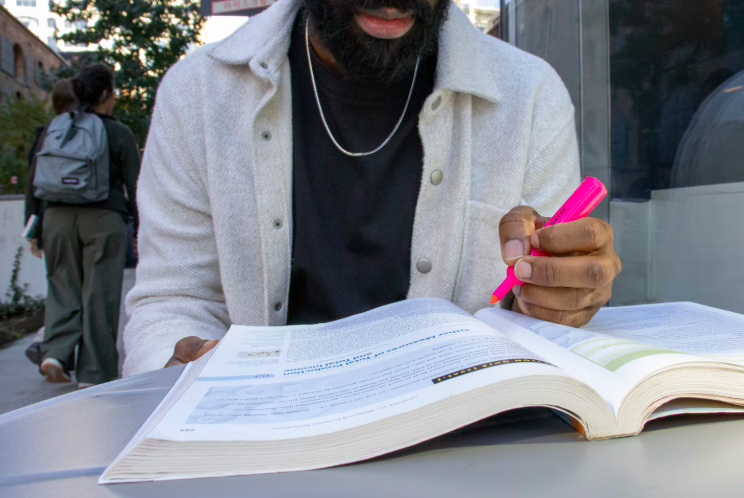Authored by Dr Emma Roberts, Head of Law at the University of Salford.
The loss of a student to suicide is a profound and heartbreaking tragedy, leaving families and loved ones devastated, while exposing critical gaps in the support systems within higher education. Each death is not only a personal tragedy but also a systemic failure, underscoring the urgent need for higher education institutions to strengthen their safeguarding frameworks.
Recent government data revealed that 5.7% of home students disclosed a mental health condition to their university in 2021/22, a significant rise from under 1% in 2010/11. Despite this growing awareness of mental health challenges, the higher education sector is grappling with the alarming persistence of student suicides.
The Office for National Statistics (ONS) reported a rate of 3.0 deaths per 100,000 students in England and Wales in the academic year ending 2020, equating to 64 lives lost. Behind each statistic lies a grieving family, unanswered questions and the haunting possibility that more could have been done. These statistics force universities to confront uncomfortable truths about their ability to support vulnerable students.
The time for piecemeal solutions has passed. To confront this crisis, bold and systemic reforms are required. One such reform – the introduction of an opt-out consent system for welfare contact – has the potential to transform how universities respond to students in crisis.
An opt-out consent model
At present, universities typically rely on opt-in systems, where students are asked to nominate a contact to be informed in emergencies. This has come to be known as the Bristol consent model. Where this system exists, they are not always invoked when students face severe mental health challenges. The reluctance often stems from concerns about breaching confidentiality laws and the fear of legal repercussions. This hesitancy can result in critical delays in involving a student’s support network at the time when their wellbeing may be most at risk, leaving universities unable to provide timely, life-saving interventions. Moreover, evidence suggests that many students, particularly those experiencing mental health challenges, fail to engage with these systems, leaving institutions unable to notify loved ones when serious concerns arise.
Not all universities have such a system in place. And some universities, while they may have a ‘nominated person’ process, lack the infrastructure to appropriately engage the mechanism of connecting with the emergency contact when most needed.
An opt-out consent model would reverse this default, automatically enrolling students into a system where a trusted individual – such as a parent, guardian or chosen contact – can be notified if their wellbeing raises grave concerns. Inspired by England and Wales’ opt-out system for organ donation, this approach would prioritise safeguarding without undermining student autonomy.
Confidentiality must be balanced with the need to protect life. An opt-out model offers precisely this balance, creating a proactive safety net that supports students while respecting their independence.
Legislative provision
For such a system to succeed, it must be underpinned by robust legislation and practical safeguards. Key measures would include:
- Comprehensive communication: universities must clearly explain the purpose and operation of the opt-out system during student onboarding, ensuring that individuals are fully informed of their rights and options.
- Defined triggers: criteria for invoking welfare contact must be transparent and consistently applied. This might include extended absences, concerning behavioural patterns or explicit threats of harm.
- Regular reviews: students should have opportunities to update or withdraw their consent throughout their studies, ensuring the system remains flexible and respectful of changing personal circumstances.
- Privacy protections: institutions must share only essential information with the nominated contact, ensuring the student’s broader confidentiality is preserved.
- Staff training: university staff, including academic and professional services personnel, must receive regular training on recognising signs of mental health crises, navigating confidentiality boundaries and ensuring compliance with the opt-out system’s requirements. This training would help ensure interventions are timely, appropriate and aligned with legal and institutional standards.
- Reporting and auditing: universities should implement robust reporting and auditing mechanisms to assess the effectiveness of the opt-out system. This should include maintaining records of instances where welfare contact was invoked, monitoring outcomes and conducting periodic audits to identify gaps or areas for improvement. Transparent reporting would not only enhance accountability but also foster trust among stakeholders.
Lessons from the organ donation model
The opt-out system for organ donation introduced in both Wales and England demonstrates the effectiveness of reframing consent to drive societal benefit. Following its implementation, public trust was maintained and the number of registered organ donors increased. A similar approach in higher education could establish a proactive baseline for safeguarding without coercing students into participation.
Addressing legal and cultural barriers
A common barrier to implementing such reforms is the fear of overstepping legal boundaries. Currently, universities are hesitant to breach confidentiality, even in critical situations, for fear of breaching trust and privacy and prompting litigation. Enshrining the opt-out system in law to include the key measures listed above would provide institutions with the clarity and confidence to act decisively, ensuring consistency across the sector. Culturally, universities must address potential scepticism by engaging students, staff and families in dialogue about the system’s goals and safeguards.
The need for legislative action
To ensure the successful implementation of an opt-out consent system, decisive actions are required from both the government and higher education institutions. The government must take the lead by legislating the introduction of this system, creating a consistent, sector-wide approach to safeguarding student wellbeing. Without legislative action, universities will remain hesitant, lacking the legal clarity and confidence needed to adopt such a bold model.
Legislation is the only way to ensure every student, regardless of where they study, receives the same high standard of protection, ending the current postcode lottery in safeguarding practices across the sector.
A call for collective action
Universities, however, must not wait idly for legislation to take shape. They have a moral obligation to begin addressing the gaps in their welfare notification systems now. By expanding or introducing opt-in systems as an interim measure, institutions can begin closing these gaps, gathering critical data and refining their practices in readiness for a sector-wide transition.
Universities should unite under sector bodies to lobby the government for legislative reform, demonstrating their collective commitment to safeguarding students. Furthermore, institutions must engage their communities – students, staff and families – in a transparent dialogue about the benefits and safeguards of the opt-out model, ensuring a broad base of understanding and support for its eventual implementation.
This dual approach of immediate institutional action paired with long-term legislative reform represents a pragmatic and proactive path forward. Universities can begin saving lives today while laying the groundwork for a robust, consistent and legally supported safeguarding framework for the future.
Setting a New Standard for Student Safeguarding
The rising mental health crisis among students demands more than institutional goodwill – it requires systemic change. While the suicide rate among higher education students is lower than in the general population, this should not be a cause for complacency. Each loss is a profound tragedy and a clear signal that systemic improvements are urgently needed to save lives. Higher education institutions have a duty to prioritise student wellbeing and must ensure that their environments offer the highest standards of safety and support. An opt-out consent system for welfare contact is not a panacea, but it represents a critical step towards creating safer and more supportive university environments.
The higher education sector has long recognised the importance of student wellbeing, yet its current frameworks remain fragmented and reactive. This proposal is both bold and achievable. It aligns with societal trends towards proactive safeguarding, reflects a compassionate approach to student welfare and offers a legally sound mechanism to prevent future tragedies.
The loss of 64 students to suicide in a single academic year is a stark reminder that the status quo is failing. By adopting an opt-out consent system, universities can create a culture of care that saves lives, supports grieving families and fulfils their duty to protect students.
The time to act is now. With legislative backing and sector-wide commitment, this reform could become a cornerstone of a more compassionate and effective national response to student suicide prevention.











